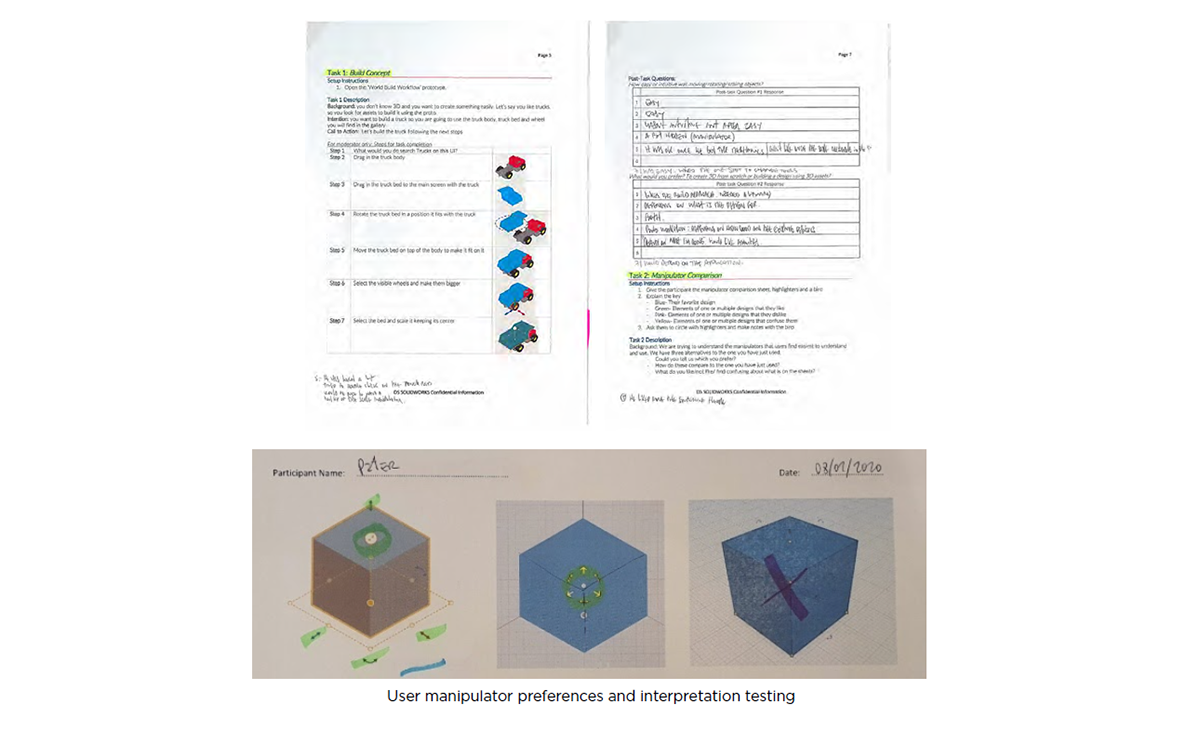R&D 3D Design For All
What if everyone could design in 3D?
Dassault Systèmes R&D project with the purpose to bring the power of 3D design for all. The nature of this project is confidential, so I'm not able to show most of the project visuals. However, I'm going to provide as much information as possible about the work I did in this project.
[Note: If I've applied to a role or you are recruiting, and want to know more, I'll be happy to share more details of this project with you in an online presentation.]
As part of the Dassault Systèmes R&D team, based in Cambridge, UK, I worked in a project called 3DByMe.
To give a bit of context, some of the most important brands of Dassault Systèmes, provide tools for industries, designers and engineers to create physical products in 3D and define them for manufacturing. The challenge in 3DByMe was to bring the power of 3D modelling for those who don't have the expertise.
My role as UX Designer was providing user's inputs and insights into the development of the software. I worked with a team composed by a Visual Designer, Developers and a Project Manager.
Understand
I contributed in the user research in the early stage of the software to shape the usability, wireframes and workflows for different features.
There were studied different interfaces, workflows and interactions in different advanced CAD tools like Solidworks and xDesign to understand how users work. Users with an advanced 3D design background have the ability to envision how the design has to be created, something that is totally different to someone who doesn't normally design in 3D.
The real challenge was to avoid any biased mental model of 3D designers and engineers to model in 3D. From research we created personas that helped us to shape the usability and tools.
Define
Insights gathered by research were considered and mapped to consider in our design. Understanding users painpoints provided us with the right criteria to define the UX.

Ideate
We created different wireframes and mockups with UI layouts and workflows that answered the insights gathered and users requirements. From there we started to build prototypes to test these concepts.
Prototype
With the collaboration of the visual designer, we created some use case scenarios with high-fi prototypes. As a result we created different workflows to learn from users. This way iterated in the process to improve the product.

Test
We tested the prototypes and observed users' reactions and feedback of their experience. A/B testing also was a good way to see what users understood better. This was a constant cycle of learning and improvement until shaping and refining the direction of the software.

UX design specifications were provided with all the requirements and details needed. After several cycles the final 3DByMe app was shaped and refined. It can be seen here.





